Random "work in progress" shots
category: general [glöplog]
In the blinn-phong model you essentially compare how close the reflection event is to a mirror reflection; the clamped dot product gives a 0-1 score of how well the half-vector matches the normal. The half-vector is the normalized sum of the normalized view and light directions: it’s the direction where the normal should be for a perfect mirror direction. If the half-vector and normal match perfectly the dot product gives a one (full reflection) and if they’re perpendicular or point away from each other we get a zero (no reflection). Then the fall-off of this dot product is changed with a power: the larger the power, the quicker the fall-off goes to zero and thus the tighter the specular highlight will be. Conversely, a lower power will give a softer look. As an often neglected part you also need to normalize the specular albedo based on the glossiness: if the power is vey high, the spike of the distribution is narrow and the material will appear dark without it (I’ve used (glossiness+4)/(8*pi)).
Just to maybe give an intuition since knowledge is power; your own model looks good so just go with it if you wish :)
Just to maybe give an intuition since knowledge is power; your own model looks good so just go with it if you wish :)

working on something
damn thats sweet
i suppose we will see this thing for real at the next revision? including the glowy parts? =)
i suppose we will see this thing for real at the next revision? including the glowy parts? =)
hi wysiwtf
thank you.
let's see what we can do in virtual reality with this ;)
thank you.
let's see what we can do in virtual reality with this ;)
@cosmicollie, that looks great. Some Questions: Is this a physically based material, that PBR shiznat? What tools do you use?

Different color grading for each scene turned out to be a bit fiddlier than I thought and also revealed some serious bottlenecks in both the graph rendering and traversal - but hey, that's what development is about, right?
Garg: one day before the party? :)
No, about two weeks ago :)
Hi EvilOne
thank you.
let me explain the workflow for this:
• mainly i´m working with Zbrush - you can handle very very high polycounts with it
because zb uses pixols internally - basically voxels - pixels with depth information
• that makes it very fast performance wise - only when you export a model it becomes actually
polygonal data
• in this example i use a function called LiveBoolean - it´s a non destructive boolean function
in Zbrush
• is start with more or less simple 3d primitives - edit them here and there and do a lot of
boolean operations - union / cutting / intersecting etc. this principle can be used in any 3d program
you can think of.
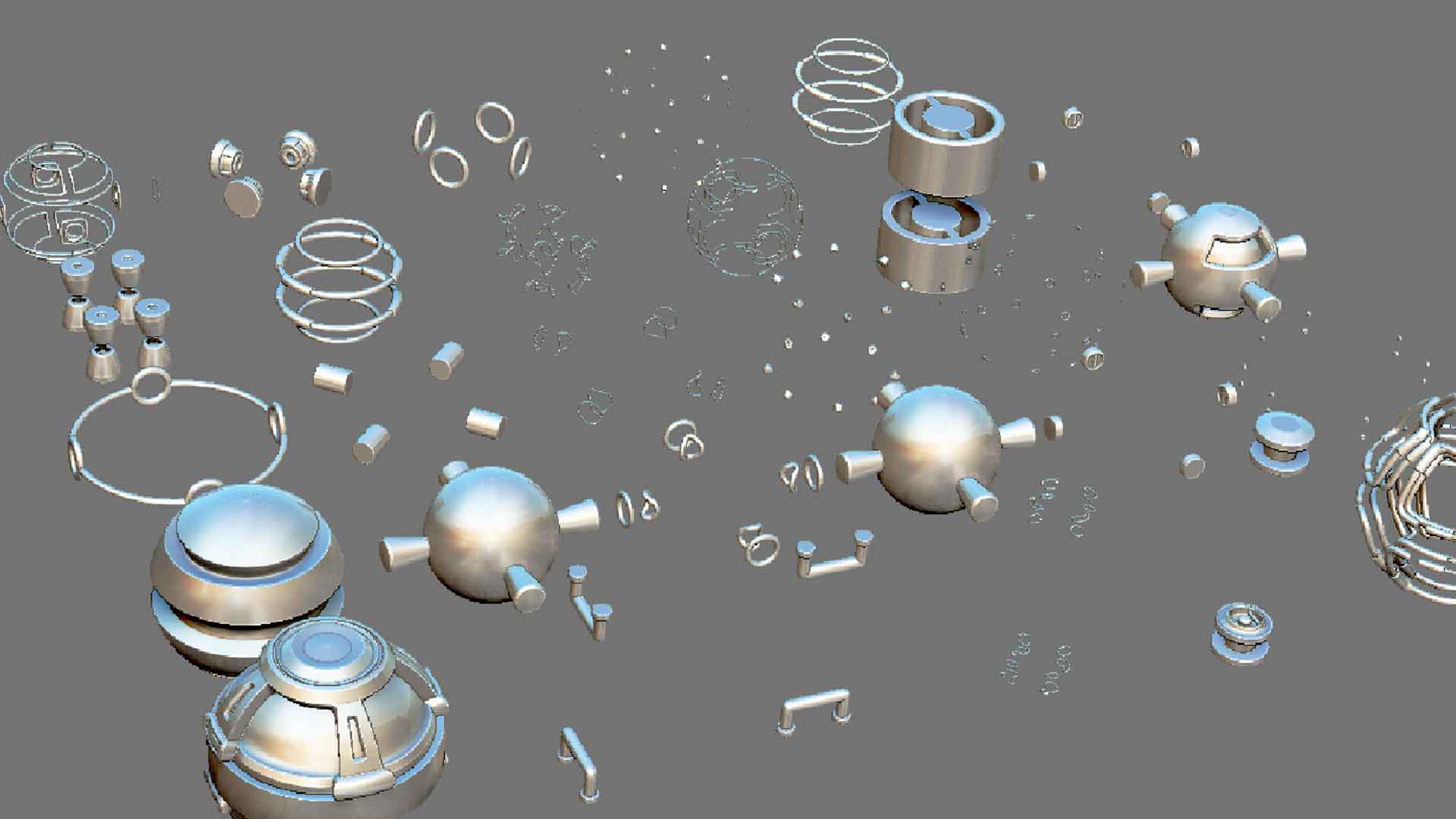
• without LiveBoolean i end up with something like this:
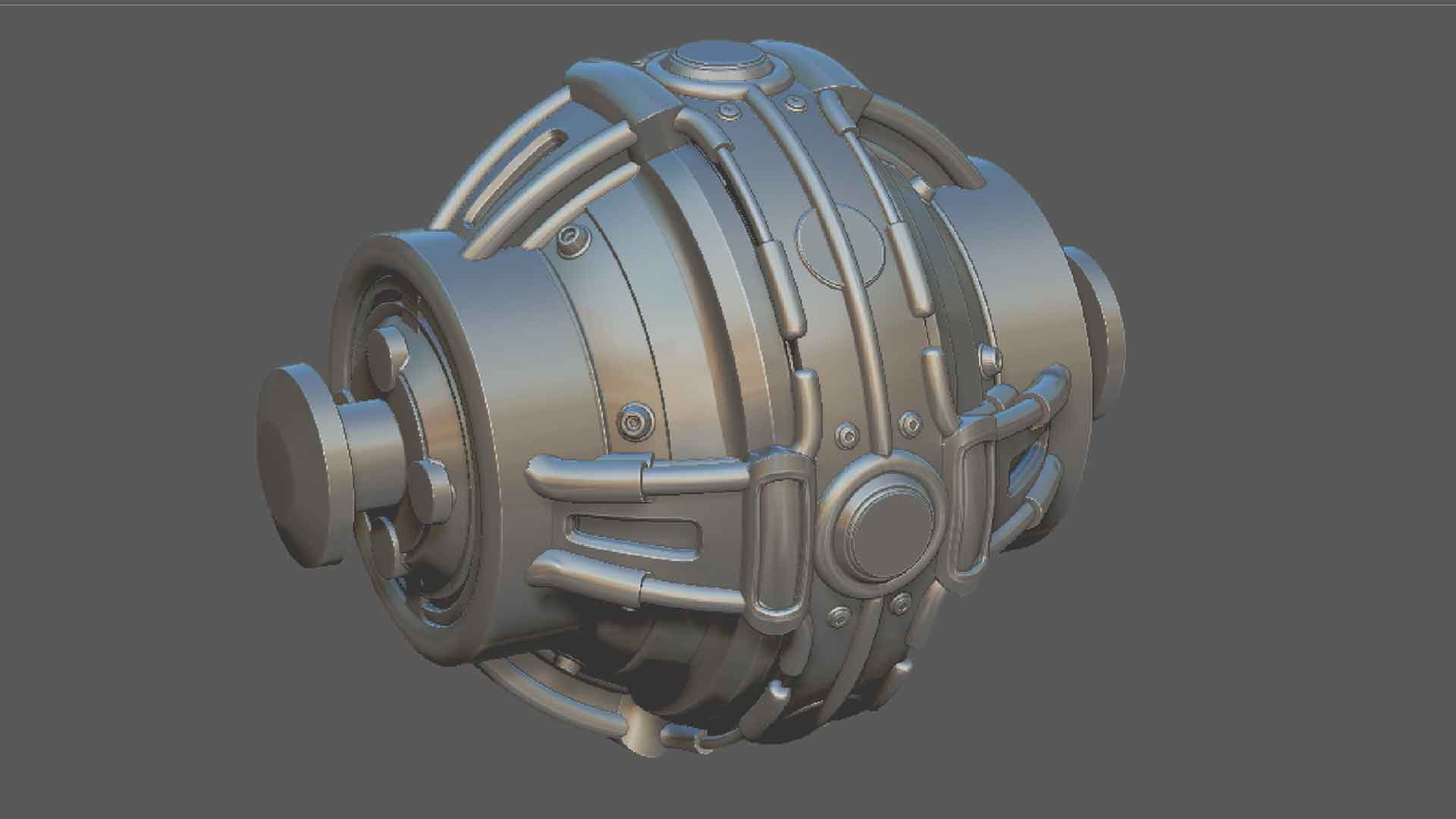
• with live boolean activated i get this:
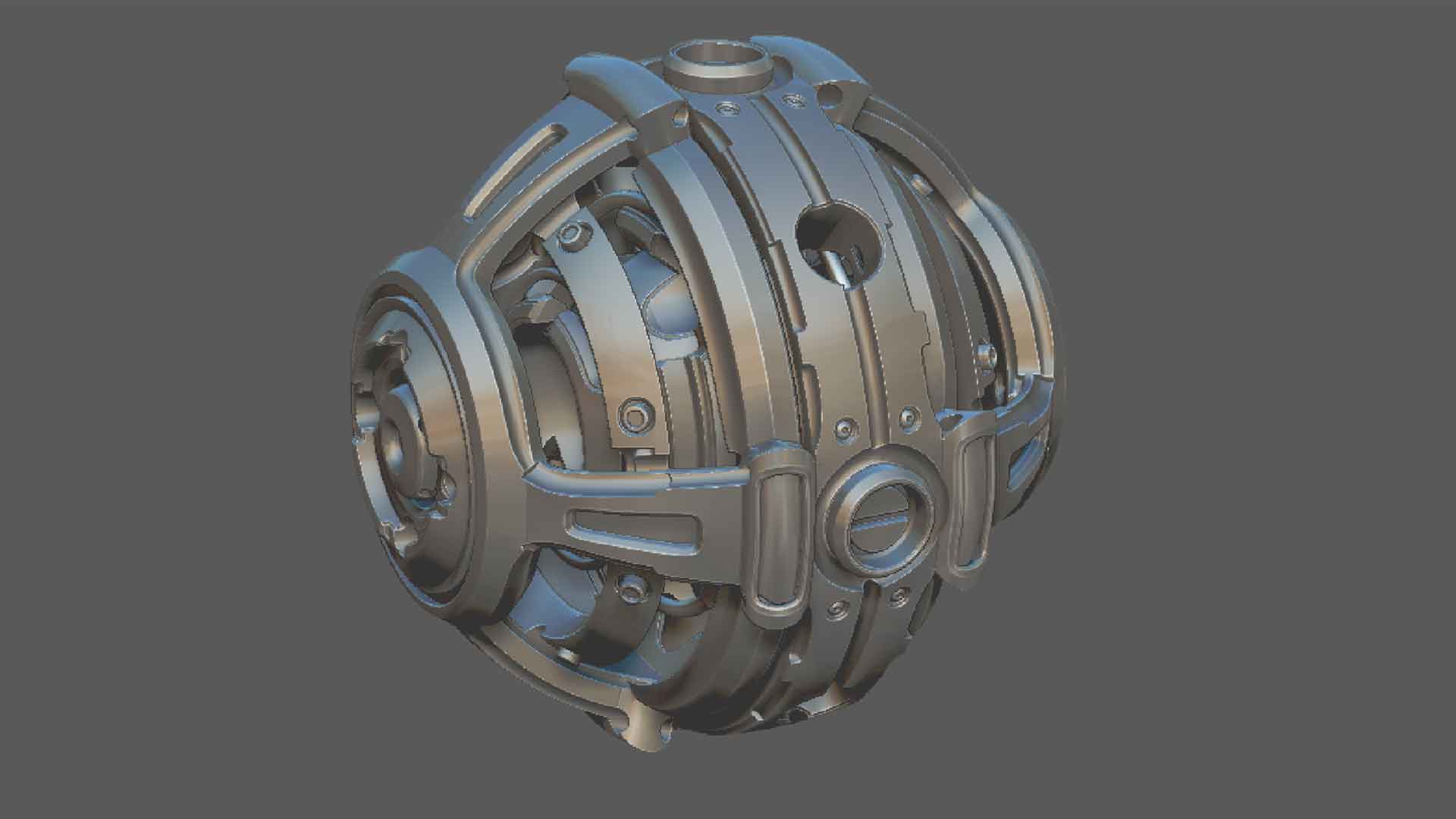
• when i´m happy i execute the lb operation / make it permanent and i end up with a very high
resolution model concerning polycount - i this example around 9 million polygons
• not very handy for realtime :)
• so i do a decimation process with a function called decimation master which gives me pretty
good results. the topology is not perfect - but this can be fixed optionally if needed with a retopology process.
• after that i have an object (or multiple) with a polycount of about 500k polys - which is not
cool for a 4k demo but for a normal demo it is ok.
• i export everything to 3dcoat (substance painter would be an option but my computer was too old
at that time so i chose 3dc) and do all the painting - yes it is pbr.
• 3dcoat also generates the uv layout. and i do all the painting / smart material etc. stuff there.
• albedo pass, ambient occlusion pass, emissive, roughness, metallness, etc are then automatically generated.
• these i export from 3dc to marmoset toolbag and there i do all the material stuff - and a lot of
post fx -> dof, color correction, sharpening, fancy glow etc.
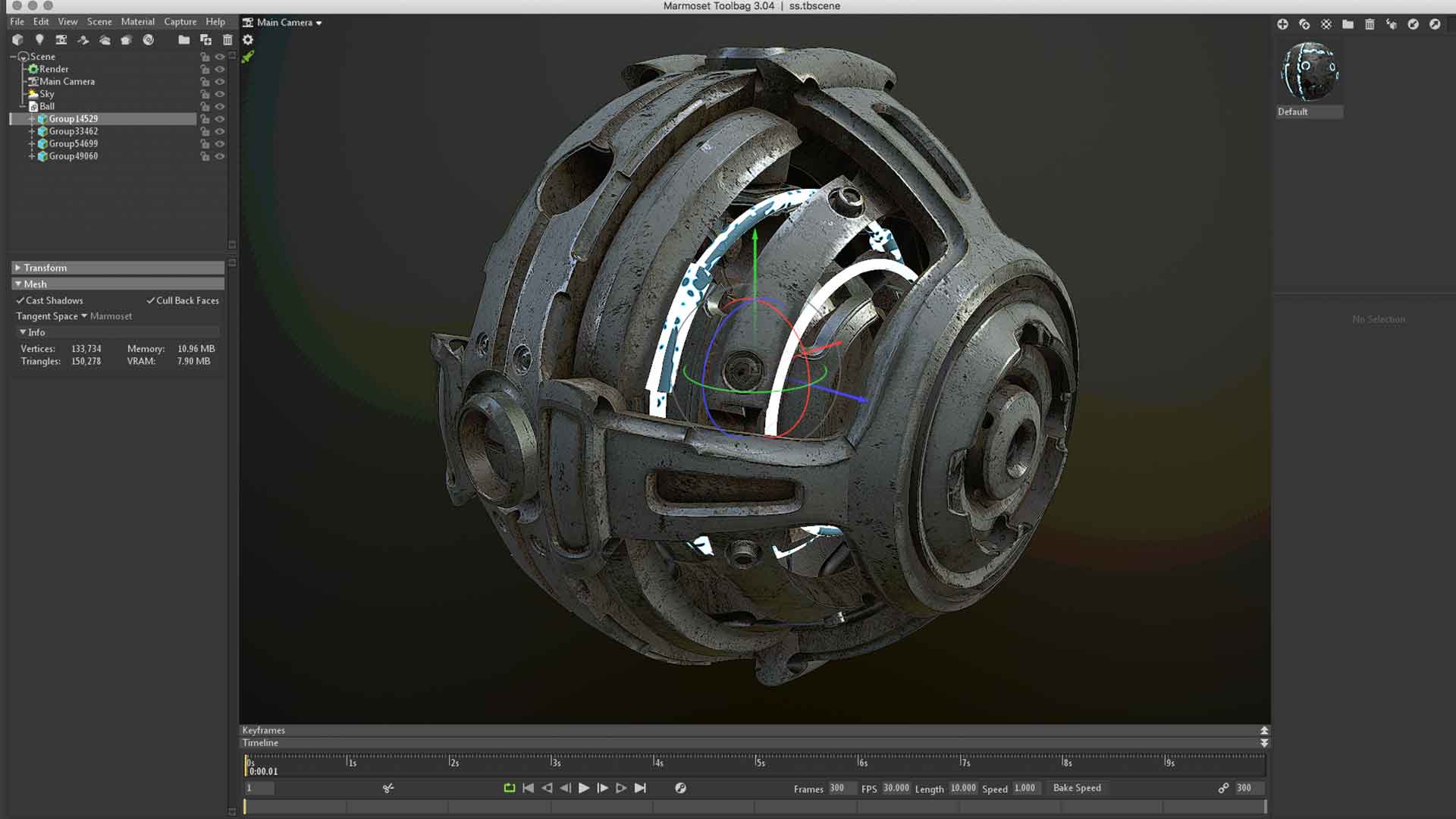
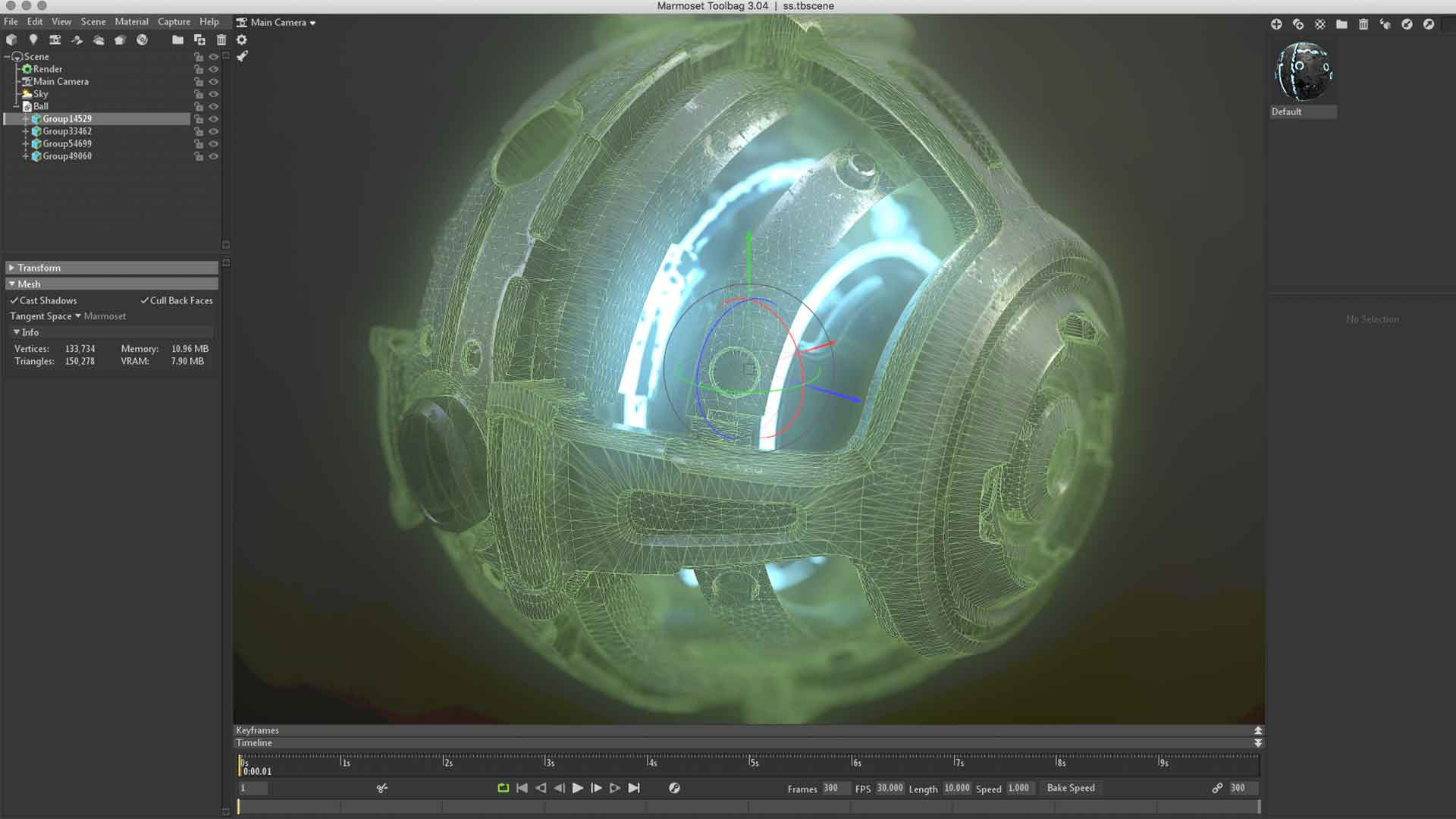
• and from there i can export it eg. for webGL for Websites (the base html code is generated in a small file) or to sketchfab or artstation, to blender, to a demoengine, give it to a coder etc.
if you are interested what LiveBoolean is capable of - or Zbrush in general - please take a look at these short videos:
http://pixologic.com/zclassroom/tag/Live%20Boolean
even if one doesn´t want to learn 3D Sculpting or Modeling - maybe some concepts are a great inspiration
as well for coders. and maybe some ideas will be good for a next demo production.
If you - on the other hand are interested in learning zbrush - theres a trial version on their site and if you have any
question - ask - i´ll try to help you there.
have a nice day and thank you for your interest.
Ollie / Cosmic^nce^hly
thank you.
let me explain the workflow for this:
• mainly i´m working with Zbrush - you can handle very very high polycounts with it
because zb uses pixols internally - basically voxels - pixels with depth information
• that makes it very fast performance wise - only when you export a model it becomes actually
polygonal data
• in this example i use a function called LiveBoolean - it´s a non destructive boolean function
in Zbrush
• is start with more or less simple 3d primitives - edit them here and there and do a lot of
boolean operations - union / cutting / intersecting etc. this principle can be used in any 3d program
you can think of.

• without LiveBoolean i end up with something like this:

• with live boolean activated i get this:

• when i´m happy i execute the lb operation / make it permanent and i end up with a very high
resolution model concerning polycount - i this example around 9 million polygons
• not very handy for realtime :)
• so i do a decimation process with a function called decimation master which gives me pretty
good results. the topology is not perfect - but this can be fixed optionally if needed with a retopology process.
• after that i have an object (or multiple) with a polycount of about 500k polys - which is not
cool for a 4k demo but for a normal demo it is ok.
• i export everything to 3dcoat (substance painter would be an option but my computer was too old
at that time so i chose 3dc) and do all the painting - yes it is pbr.
• 3dcoat also generates the uv layout. and i do all the painting / smart material etc. stuff there.
• albedo pass, ambient occlusion pass, emissive, roughness, metallness, etc are then automatically generated.
• these i export from 3dc to marmoset toolbag and there i do all the material stuff - and a lot of
post fx -> dof, color correction, sharpening, fancy glow etc.


• and from there i can export it eg. for webGL for Websites (the base html code is generated in a small file) or to sketchfab or artstation, to blender, to a demoengine, give it to a coder etc.
if you are interested what LiveBoolean is capable of - or Zbrush in general - please take a look at these short videos:
http://pixologic.com/zclassroom/tag/Live%20Boolean
even if one doesn´t want to learn 3D Sculpting or Modeling - maybe some concepts are a great inspiration
as well for coders. and maybe some ideas will be good for a next demo production.
If you - on the other hand are interested in learning zbrush - theres a trial version on their site and if you have any
question - ask - i´ll try to help you there.
have a nice day and thank you for your interest.
Ollie / Cosmic^nce^hly
Thanks for this in-depth explanation. I always wondered how such high quality models are made. Do you spend more time on modelling or texturing?
Not strictly a work in progress shot, but I wrote up a thing about my demo:
http://gargaj.tumblr.com/post/178117551485/along-for-the-ride-a-reasonably-complex-demo
http://gargaj.tumblr.com/post/178117551485/along-for-the-ride-a-reasonably-complex-demo
msqrt: Thanks!(bit too late..) but this helped me to understand main principle of phong shading!
Gargaj: So complicate... I wish i could make demos like this in near future..!
Gargaj: So complicate... I wish i could make demos like this in near future..!

I want to rotate that but it distorts itself..
I still cannot understand this..
Do you rotate the original mesh every frame, or do you keep rotating the rotated mesh from the previous frame?
Quote:
Do you rotate the original mesh every frame, or do you keep rotating the rotated mesh from the previous frame?
This is raymarching.. i just used rotate matrix
Hard to tell without seeing the image; are you rotating the point or the ray or..?
https://i.imgur.com/6szTEDn.mp4
Oh.. file was mp4
Oh.. file was mp4
Hm, well that doesn't help much without know how it's supposed to look like. Either your rotation matrix / code is wrong, or you're rotating something that you shouldn't be.
Total fail
Here's Shadertoy page..
Here's Shadertoy page..
404?
Quote:
404?
oh- it was set to private..
I turned that into public

Quote:
Total fail
Here's Shadertoy page..
actually it already looks pretty nice! slap a proper lighting and postprocess and it's done :)
Quote:
Quote:404?
oh- it was set to private..
I turned that into public
Yeah that shader looks like it's bleeding from many wounds :) Your ray direction calculation seems weird especially :)

